

Birding with Lars
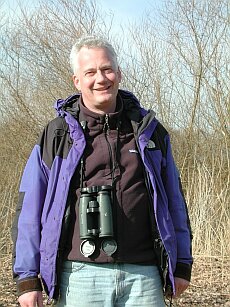
Lars Vilhelm Hansen is a birder from Denmark who was in Baltimore on business for five days in early March. He was free to go birding for one weekend. He had previously seen about 100 US bird species on birding squeezed into business trips to Boston, New York, Washington DC, and San Francisco. In preparation for his visit here he found the Baltimore Bird Club on the Internet and ordered our Birder's Guide to Baltimore and Baltimore County Maryland through Joe Lewandowski. Lars also inquired whether any local birders might want to show him around. Joe passed this request on to some members. I jumped at the chance because I remembered how much fun we had last spring when Tony Eveleigh was visiting from England.
On Saturday, March 8, I picked up Lars in the Inner Harbor for the first of two days of birding. On our first stop in northern Baltimore Keith Costley performed some magic and found a Saw-whet Owl buried very deeply within a small spruce tree. Lars said this was his first American owl species - not a bad start! We also got a great look at the first of many Red-bellied Woodpeckers for the day, another new species for Lars. Then we headed out to Gail Frantz' home north of Reisterstown. The highlight there was another lifer for Lars, a colorful adult Red-shouldered Hawk. We went on to Albert Rill Road near Manchester to look for a visiting Harris' Sparrow and Red-headed Woodpeckers, without success. The last major stop was in the swampy area of Eckard Road. Rather quickly we saw White-crowned Sparrows and then a well-lit male Eastern Bluebird, two more lifers for Lars. The bluebird produced quite a memorable exclamation from Lars when it flew around and showed its blue color in full glory.
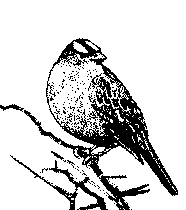
On Sunday, March 9, Lars, Gail, and I headed for Cambridge and Blackwater NWR, targeting Bald Eagles and waterfowl. We had our first Bald Eagle of the day - an adult - right along Route 50 on Kent Island. This evoked another even more emphatic exclamation from Lars. We saw 5 more eagles before we got to Blackwater. At the Cambridge waterfront off Oakley Road the ducks were numerous and very close, as usual. They were mainly Canvasbacks, Lesser Scaup, and American Wigeon, all of which were new for Lars, as was the one Redhead and a distant Surf Scoter. Once we got to Blackwater, we lost track of our Bald Eagle count at about 20. We sat down for lunch in the company of quite a few Brown-headed Nuthatches cavorting in good view. Apart from that, the land birds were awfully scarce, probably due to high winds, so it was good we saw a lot of them on Saturday. Waterfowl were not too abundant there either, but Lars did add a handsome male Hooded Merganser to his list.
Around 5 PM I decided to pull down a side road north of Blackwater because it looked potentially good for a last search for field birds. Lars asked if he could step out to tend to the call of nature. While he was doing that, Gail spotted a group of about 8 Wild Turkeys not too far away. The light was great. They were glistening with color, almost like hummingbirds. We decided it wouldn't be too impolite to tell Lars to hurry up with his business and take a look. He did - and got great looks at his final life-species of the day.
Lars has a great sense of humor and we had a great time birding with him. He added 23 species to his life list on this visit. I learned a lot about European birds and the Danish language, especially since he gave me a beautiful guide to European birds - in Danish. If you ever go to Denmark and want some local birding help he invites you to email him at . Denmark has a very active birding community. You can see some great pictures of European birds on the Danish website http://www.netfugl.dk .
If you ever have an opportunity to show a visiting foreign birder around, grab it! You should have at least as much fun as the visitor, you'll learn a lot, and you'll gain a greater appreciation of our own birds.
Mid-Atlantic Hummers
Preview by Gail Frantz
Mary Gustafson
is an outstanding member of Maryland's birding community. She has banded birds in this region for several years. She is an expert with a great wealth of experience, a particular passion for hummingbirds, and a delightful sense of good humor.Mary characterizes her May 6 lecture for us as:
Everything we don't know about winter hummingbirds in the Mid Atlantic--and a little that we have learned to date. I'll try to expand that theme for you!.
When asked to tell us a bit about herself she wrote:
We used to visit my grandparents in Arkansas for spring break when I was in elementary school. I'd wake up (very) early and be anxious to go out into the woods, which was not allowed until my parents woke up. My grandfather used to sit me down on a stool in front of a large window overlooking his feeders and tell me that he needed to know what birds he was feeding and how many of each kind. The only book he had was an old Peterson's with the plates scattered through the text. I remember having trouble separating the Pine Siskins from the Myrtle Warblers, as both were brown and streaky!
I was exposed to banding several times as a young teen. Bob Segedi of the Cleveland Museum of Natural History used to take a group of high school students to Hawk Mountain to watch the migration and spend time at a banding station. We would also trap Kestrels and band them in Ohio. I became interested in banding passerines working with Jean Aiken and Helen Sprey in Ohio. I then went on to work at several banding stations in the east, working with passerines mostly. I observed hummingbird banding in Arizona and later in Alabama where Bob Sargent shared his skills with me and Duane Berger taught me.
Bob Sargent, author of The Ruby-throated Hummingbird, describes Mary as an irreplaceable friend.
She is, by the way, one of my most favorite people on planet earth. She is our friend, our mentor, our confidant and our advisor. She knows more about the TRUE life of birds and bird banders than anyone that I have ever known. She will bird 'til she drops or band 'til she drops. In the field she will sleep on the floor, on the ground, in a truck or whatever is handy. She will eat anything that you fix for her, including horsemeat in the old Soviet Union (where she got sick and nearly croaked.)
If you are her friend, she will defend you to the death. She is my kind of friend. The highest compliment that I can pay her is to say "I wish she were my neighbor".
Be sure not to miss this fascinating and informative evening!
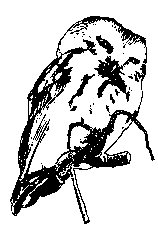
|
Winter Saw-whet Owl hear my call,
|
Morgan is the daughter of Keith Eric Costley, one of the Baltimore Bird Club's most active birders. More information about Saw-whet Owls in Baltimore will come in a future issue of Chip Notes.
Board of Directors Meetings
The BBC Board of Directors met on January 14 and Feb 11, 2003. At the January meeting it was announced that Cylburn has hired a new Naturalist, Glenda Weber, who is now responsible for visiting school groups. Ben Poscover located two fine applicants for MOS Scholarships this year. A board discussion about ways of attracting and keeping new members resulted in a decision to create a Chip Notes article about continuing education resources for new birders.
At the February meeting, on a snowy night, the Board learned that we now have 293 paid memberships, enrolling 354 people. The board further discussed the list of continuing education resources for new birders. The board began revising a "Field Trip Leaders Guide," to be mailed to all trip leaders in advance of a scheduled BBC field trip. Trip leaders are urged to: be attentive to the needs of novice birders; invite people to introduce themselves at the beginning of a trip; and announce other upcoming BBC activities.
Conservation Corner
Why Buy Shade-Grown Coffee?
The world's second most valuable export product, after oil, is coffee. Today, two-thirds of the world's coffee is produced in Central America and the Caribbean. So when coffee growing methods change and threaten bird habitat, that is bad news for birds that breed in North America and winter in the tropics.
Coffee is grown in the world's tropical rainforest regions on hillsides at 500 to 1500 meters above sea level. Coffee is one of the few large-scale commodity crops that can be grown in relative harmony with native forest. Until the 1970s, nearly all coffee was grown on multi-crop coffee plantations -- in the understory of wild fig, avocado, mango, lychee, citrus fruits, nut or other trees.
The Full-Sun Hybrid
The traditional method of growing coffee is now called shade-grown coffee - because an alternative called "sun-grown" or "full-sun" coffee was created.
A full-sun coffee plantation looks like an orchard. The rainforest is cleared. The land is thickly planted with hedgerows of a hybrid coffee plant that produces 30 percent more coffee per bush.
Full-sun coffee plantations require more agrochemicals and more maintenance. The naked slopes are vulnerable to erosion. By contrast, coffee grown in the rainforest protects freshwater resources; trees and their roots store rainwater, reduce flooding and landslides, and help recharge underground aquifers.
Bird Habitat Destroyed
Ornithologists find that in full-sun coffee plantations, the number of bird species is cut by half, and the number of individual birds is cut by as much as two-thirds. According to Jeffrey A. McNeely, Chief Scientist at the World Conservation Union, "the widespread conversion to sun-grown coffee is particularly troubling considering that 13 of the world's 25 biodiversity hot spots are in coffee country."
Since 1980, over 40 percent of the coffee area in Columbia, Mexico, Central America and the Caribbean has been converted to sun coffee, with another 25 percent of the area slated for conversion. This transition to full-sun coffee was encouraged by funding from the U.S. Agency for International Development (US AID) and local governments when world coffee prices were at their highest. Now the market is flooded with coffee and coffee prices are at a 100-year low.
Consumer Options
In 1995, Partners in Flight first publicly connected the decrease in the number of migratory birds in the Americas to the increase in sun-grown coffee. In 1998 the American Birding Association (ABA) partnered with Thanksgiving Coffee Company of California to promote and distribute "Song Bird Coffee," verified by the ABA as shade grown. The Smithsonian Migratory Bird Center now certifies and promotes a similar product called "Bird Friendly Coffee." When shade-grown coffee is sold without formal certification, it may or may not be identified as "shade-grown."
Organic coffee marketed to health conscious consumers is grown without pesticides and fertilizers. Some organic coffees are grown in the shade, but not all. You may have to ask.
Because shade-grown coffee grows more slowly than full-sun coffee, it costs a bit more. The major players, known as "the cans" in industry lingo (selling Folgers, Maxwell House and Nestle), have not yet started to pay attention because of price. But MOS is serving shade-grown coffees at MOS conventions and it is served at the National Aquarium.
What Coffee Drinkers Can Do
1. Learn about the issue from:
- Seattle Audubon Society: www.seattleaudubon.org/coffee
- Rainforest Alliance: www.rainforest-alliance.org
- Smithsonian Migratory Bird Center: http://nationalzoo.si.edu/ConservationAndScience/Migratory Birds/Coffee
2. Buy shade-grown coffee for your home.
Convert your office to brewing only shade-grown coffee.
Ask your retailer to carry it.
3. Educate friends by giving them a gift of shade-grown coffee.
|
In Baltimore, Shade-Grown Coffee is sold at: Coffee Shops: Starbucks, Seattle's Best, City Cafe, 1001 Cathedral St., 21202 Liquid Earth, 1626 Aliceanna St., 21231 OK Natural, 11 W. Preston St., 21201 Spoons Coffee House/Roastery in Federal Hill Grocery Stores: Trader Joe's, Whole Foods Market Irvine Natural Science Center on Greenspring Ave. Mail order small packages: - American Birding Association: phone 800-634-7736 Mail order 2-5 lb. bags: - Equal Exchange: www.equalexchange.com - Java Journey Coffee Roasting Co. in Federal Hill: www.javajourney.com - Spoons Coffee House/Roastery in Federal Hill. Call (410) 539-6751 |
Baltimore Harbor Count -
December 28, 2002
SPECIES Harbor Winter
R-T Loon 1 -
Common Loon - 2
P-B Grebe 4 8
Horned Grebe 3 4
D-C Cormorant 139 41
Great Cormorant 2 -
Great Blue Heron 45 20
B-C Night-heron 13 -
Black Vulture 1 40
Turkey Vulture 15 126
Canada Goose 540 4904
Mute Swan 31 4
Wood Duck 3 1
Gadwall 32 23
Am Wigeon 13 52
Black Duck 52 32
Mallard 485 489
Blue-winged Teal 2 -
N Pintail 2 -
Green-winged Teal 10 6
Canvasback 732 339
Redhead - 1
Ring-necked Duck 19 68
Greater Scaup 210 50
Lesser Scaup 10476 492
Scaup sp 3450 -
Bufflehead 312 201
Common Goldeneye 23 17
Hooded Merganser 50 48
Common Merganser 5 11
Ruddy Duck 1387 866
Bald Eagle 5 4
N Harrier 5 -
Sharp-shinned Hawk 5 7
Cooper's Hawk 9 3
Goshawk 1 -
Red-Shouldered Hawk 2 14
Red Tail Hawk 14 16
Kestrel 5 1
Merlin - 1
Peregrine Falcon 1 -
R-N Pheasant 2 5
Wild Turkey - 17
Virginia Rail 1 -
Coot 58 389
Killdeer 16 11
Bonaparte's Gull 167 364
Ring-billed Gull 5130 3119
Herring Gull 240 312
Lesser Black-bk Gull - 1
Great Black-bk Gull 76 102
Forster's Tern 1 -
Pigeon (Rock Dove) 528 387
Mourning Dove 172 111
Barred Owl - 1
Kingfisher 11 7
Red Bellied WP 17 59
Y-B Sapsucker 2 10
Downy Woodpecker 27 46
Hairy Woodpecker 2 10
Flicker 17 28
Pileated Woodpecker - 6
Eastern Phoebe 1 -
Blue Jay 24 66
Crow 90 1617
Fish Crow 13 27
Crow Sp. 111 20
Horned Lark 30 -
Car.Chickadee 47 147
Titmouse 30 143
W B Nuthatch 2 35
Brn. Creeper 2 2
Carolina Wren 51 63
Winter Wren 4 4
G C Kinglet 18 1
R C Kinglet 9 2
E Bluebird 15 48
Hermit Thrush 2 8
Robin 411 305
Catbird - 1
Mockingbird 53 75
Starling 500 433
Cedar Waxwing 3 90
Myrtle Warbler 16 12
Nashville Warbler 1 -
Pine Warbler 1 -
Com. Yellowthroat 2 -
Eastern Towhee 5 5
Tree Sparrow 22 21
Chipping Sparrow 2 -
Field Sparrow 2 49
Savannah Sparrow 9 5
Fox Sparrow 3 2
Song Sparrow 147 120
Lincoln's Sparrow - 1
Swamp Sparrow 36 11
White-Throated Sp. 254 433
Junco 123 172
Snow Bunting 9 -
N Cardinal 103 202
Red-winged Blackbi 487 101
Rusty Blackbird 3 1
Common Grackle 26 16
Cowbird 5 8
Baltimore Oriole - 1
House Finch 115 133
Goldfinch 58 43
House Sparrow 326 128
0
SPECIES 97 89
BIRDS 27748 17427
Many thanks to our counters:
Harbor Counters: Stan Arnold, Brent Byers, Mary Byers, Mary Chetelat, Keith Eric Costley, Ralph Cullison, Bill Ellis, Ellen Evans, Wayne Gordon, Kevin Graff, Peter Lev, Jim Peters, Bob Rineer, Bob Ringler, Gene Scarpulla, Debbie Terry, David Walbeck, Glenda Weber, Pete Webb (compiler), Joy Wheeler
Winter Counters: Anne Brooks, Don Burggraf, Keith Eric Costley, Cathy Carroll, Gail Frantz, Kevin Graff, Peter Lev, Elliot Kirschbaum, Nancy Kirschbaum, Jim Peters, Bob Rineer, Debbie Terry, Dave Walbeck, Pete Webb
Passionate about Cylburn and its Birds
By Joy Wheeler
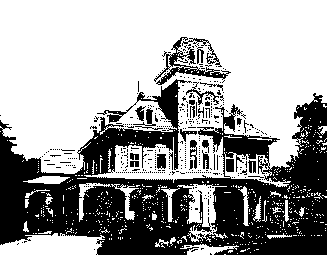
The Baltimore Bird Club was begun in 1945 to enable us to find birds in Maryland, to learn more about them, to inform the public about those birds, and to have fun while doing so. How do you fit into that mission? Since you've joined, have you seen many more birds, learned a lot about them, and had a lot of fun doing so? How about the part about informing the public about birds? Oh, sure, you've helped a beginner on one of the walks tell the difference between a Bluebird and a Blue Jay. But have you stepped up to a group of people who have declared themselves to be not birdwatchers and pointed out some compelling reasons for learning about the birds in their lives: reasons for planting their yard with trees and shrubs that produce fruits for winter birds, reasons for closely monitoring their bluebird houses, reasons for limiting the insect populations in their yards without the use of harmful pesticides, reasons for keeping their cats indoors and their dogs on leash in our parks and watersheds, reasons for supporting government efforts to provide open space and greenways which will benefit us all as well as birds?
Well, if you've made only one of these efforts, here is a second. Meet the public, many with very elementary questions about birds in our Museum of the Birds of Maryland on the second floor of Cylburn Mansion. The museum is open to the public every Tuesday and Thursday from 10 AM to 3 PM. It is open on the schedule of Open House events of the Cylburn Arboretum Association on many weekends throughout the year, usually from 10:30 AM to 2 PM. These events make meeting the public very easy. They come to us. All we have to do is open the museum door for them and make our pitch. During a Fall event over 200 visitors to the museum were counted. One visitor became a member on the spot; another expressed an interest in the Christmas Bird Count and the Atlas and left his name to be forwarded to Debbie Terry.
And then there are the young people who come with their schools to learn about their natural surroundings. Natural surroundings include birds to be seen and heard at Cylburn and these young people deserve to have guides who know as much about birds as we do. Will you be one of the guides who meet the public in our Museum? Even if it's only once a year your abilities will be welcome.
Now is the time to thank our loyal leaders for the Fall. Irma Weinstein, Dwight Johnson, Patsy Perlman and I were all described in a thank you letter from the teacher as being "passionate" about our connections with Cylburn, its birds and plants and history. If you would like to be described as being "passionate," even if only about Cylburn and its birds, call Patsy Perlman (410-466-3998) or me, Joy Wheeler (410-825-1204).
Field Trip Reports
Once again the snowy weather has resulted in very few of our field trips actually taking place this season, but a few stalwarts did get out.
Jan 18 - New Design Road - The trip to the Lily Pons area of southern Frederick County started with no birds on the ground anywhere, but ended up at noon with a flock of about 200 Horned Larks and at least three Lapland Longspurs at Oland Road about half-way between New Design Road and Buckeystown Pike. No Snow Buntings detected. The weather was extremely cold, running from about 6 to 20 degrees! but sunny and windless. 10 participants. Leader: Pete Webb.
Mar 1 - Cromwell Valley Park - Leader Keith Costley reports:
Six stouthearted birders joined me for the BBC's Cromwell Valley Farm Park walk. The snow-clad farm was a wonder to behold. We tallied thirty-three species in three hours; and Paul Noell added five more species to the list after splitting from the group.
Near the end of the walk we saw a flock of crows mobbing a Buteo that had extensive light coloration across the upper wing. The underside of the wings appeared light as well. I did not see any dark markings on the belly or breast. We checked Sibley's guide, looking at the Rough-legged Hawk, and could not positively name the bird. *
Other highlights included a close-up Winter Wren; a Yellow-rumped Warbler feeding at a sapsucker well; a Hairy Woodpecker; and the eleven Cedar Waxwings that came to us near the end of the walk.
*After some research Keith later determined that it must have been a "Kriders Hawk," a color morph of the eastern Red-tailed Hawk.
Who Feeds the Birds at Cylburn?
"Neither rain, nor snow, nor sleet, nor hail" has deterred Mr. Charles Anderson, who lives next-door, from diligently managing to keep our bird feeders filled for our many friendly critters at Cylburn Arboretum. The bird community, as well as, all the other extraneous visitors are grateful to Charles for his faithful attendance. Thank you Charles!
Patsy Perlman
Fort McHenry "Big Day"
What: An intensive monitoring of birds on the Fort grounds and the adjacent wetland during Spring migration.
When: Sunday May 4, 2003 from one hour before first light (5 AM) to one hour after dark (7 PM)
Who: The Star Spangled Birders of Fort McHenry and members of the Baltimore Bird Club, a chapter of the Maryland Ornithological Society.
Directions to the Fort: See directions on page 36, BBC 02-03 program book.
Parking: Fort Visitor parking lot.
Rest rooms: Port-a-Pottie in the maintenance yard pre and post Fort hours. Rest rooms in Visitor Center.
Special Instructions: Birders entering the Fort at 5 AM may not leave the Fort until the gate opens at 8 AM. Those remaining after 5 PM may not leave the Fort until the Big Day ends at 7 PM.
Weather: The "Big Day" will be held regardless of weather conditions. Come prepared for the forecast weather.
Lunch: Participants may bring a lunch, or buy at a local restaurant.
Special Needs: Birders may find telescopes useful for long-distance viewing.
Meeting Time: The Star Spangled Birders will meet at the front gate of the Fort between 4:45 AM and 5 AM Sunday May 4. The Big Day will begin at 5 AM in the Visitor Center parking lot. Birders arriving after 8 AM can meet the group on the Fort grounds or on the Wetland Nature Trail.
Team Captain: Jim Peters 410-429-0966
Eastern Wood-Pewee
One of the few vocalizations that I can recognize is that of the Eastern Wood-Pewee. Its familiar "pee-a-wee" or "pee-yer" sounds enough like its name that I can usually identify the bird and often spot it sitting on a branch.
Typically the Eastern Wood-Pewee, which feeds primarily on insects, sits exposed on a tree limb waiting for its prey. Then it will dart out, catch the insect in mid-air, and return to its perch awaiting another tasty morsel (a process called 'hawking').
They will return to this area in May from their wintering grounds. Eastern Wood-Pewees winter in Columbia and Venezuela, south to Peru, and west to Brazil. It is amazing to me to think of these birds, just six inches in length, flying so far.
Once they arrive, females will begin to build their nests in preparation for the breeding season which runs from June 1 through August 15. The nests, in deciduous and deciduous-coniferous forests are usually built between 15 and 35 feet above ground. They are small and well-camouflaged, cup-like in shape, and built on a horizontal limb far from the trunk.
The female, which has one brood, will incubate the nest, which takes about 12 to 13 days. The eggs are white to creamy, marked with browns and purples. During incubation, the male will feed the female. The altricial (immobile, downless) young are tended by both the male and female and will leave the nest after 14-18 days.
As reported in the Atlas of the Breeding Birds of Maryland and the District of Columbia, Eastern Wood-Pewees were found in virtually every atlas block when the last Atlas project was conducted in 1983-1987.
They will leave us again in October, flying back to their wintering grounds in South America. Although we may think of Eastern Wood-Pewees and other migratory species as 'our' birds that go south for the winter, the fact is that South America is their home.
Why do birds migrate north to breed? It is presumed that seasonal migration evolved in order to increase their reproductive output. They are able to exploit areas that are more productive or provide less competition. In addition, there are more hours of daylight in the spring and summer at higher latitudes. Thus, more hours are available to gather food.
(Source: The Birder's Handbook: A Field Guide to the Natural History of North American Birds)
Birding at Tikal
In January I joined a group traveling to Guatemala sponsored by Essex Community College. We visited many beautiful and interesting sites over a two-week period. From a birding perspective, two days spent at Tikal, an ancient Mayan archaeological site, yielded 30 or more species of birds. Tikal is deep in the jungle of northern Guatemala, and in addition to birds, we were treated to sights of agouti, coati mundi, spider monkeys, and the harsh roars of howler monkeys.
Many of the guides at Tikal are experienced birders, and are eager to share their knowledge. Using Peterson's Field Guide to Mexican Birds, we identified Little Blue Heron, Great Blue Heron, Great Egret, Cattle Egret, Green Heron, Plain Chachalaca, Great Curassow, Ocellated Turkey, Rufous-necked Wood-rail, Northern Jacana, Purple Gallinule, Red-lored and Yellow-lored Parrots, Squirrel Cuckoo, Black Vultures, Collared Araçari, Strong-billed, Ruddy, and Tawny-winged Woodcreepers, Cinnamon Becard, Great Kiskadee, Social Flycatcher, Brown Jay, Clay-colored Robin, Black & White Warbler, Hooded Warbler, Myrtle Warbler, Chestnut-headed Oropendola, Melodious Blackbird, Great-tailed Grackles, Altimira Oriole, and Gray-headed Tanager.
We stayed at the Jungle Lodge, which is within walking distance of the ruins and is beautifully landscaped with tropical plants and shrubs. Guides can be hired through the Jungle Lodge.
Travelers' Aid for Birders
In case you haven't noticed, Jack Siler's website: http://birdingonthe.net has undergone some refinements that make it an even better resource than ever. Above all, it's a great place to get information about birding in an area you are traveling to.
As always, you can easily view up-to-date transcripts of Rare Bird Alerts from all over the US and Canada. These are under the heading of "Mailing Lists," then "Rare Bird Alerts".
A great new addition under "Mailing Lists" is the "Regional/Specialty" group. From there you can easily view recent postings on birding email discussion sites all over the nation similar to our area's "MDOSPREY." If you want to see older postings, you can look under the "List Archives Index" for links to the "archive" sites that contain all the messages on that list, often going back for years.
There are a number of other features such as Lists, Links, and Galleries that you can explore. If you want to get to this great site, but don't have the address handy, our trusty Baltimore Bird Club site, http://www.baltimorebirdclub.org/, has a direct link to it under the heading "Regional Rare Bird Alerts", in the sub-category "RBA's".
Fort McHenry's Fall Migration
The fall of 2002 migration seemed to get off to a slow start. The Fort experienced predominantly southerly winds and mild weather and the birds trickled through steadily, but in small numbers.
This began to change in late October and into November as frontal systems from Canada brought colder air, rain showers, a snowstorm and an ice storm to Baltimore. By the first week of December the year count had reached 148 species, 28 more than all the birds seen in '99-'00 and only 7 shy of the year count in '00-'01. As of January there were 151 species.
By the end of the current year it is possible that records may be broken. The highest count occurred last year with a total of 174 species. Currently there are only 26 more species to be tallied to tie that record. Along the way 7 new species have been added to the Fort's list: Barn Swallow, Clay-colored Sparrow, Brant, Redhead, Long-tailed, Common Golden-eye and N. Goshawk.
With the addition of the N. Goshawk, the total birds recorded for the Fort is now 201 species, an amazing number given the size of the wetland (10 acres). This represents 49.3% of all the birds on the Maryland checklist.
Towson Peregrine Falcon
Without my specialized education achieved through my association with the Baltimore Bird Club, MOS, the drama enacted in the skies high over central Towson may have had no meaning .. And how dull my life would have been. It was mid-afternoon, 3:30 PM to be exact, in early November. I know that because I had arrived at my parking meter just before it was to expire. I noticed the sky to the west was crowded with a large flock of pigeons wheeling and reeling just above the Towson Commons building. Ugh! Nothing here to interest me, that is, until 1 saw what was disturbing the pigeons-a Cooper's Hawk, flapping and gliding, sometimes through the pigeon flock with its talons down, sometimes rising above it to flap around it and down through it again. It did this 4 or 5 times with no quarry before it flew south over the top of the library parking garage out of sight.
I was ready to put down my binoculars and drive away (The meter was showing red.) when I realized the pigeons were still reeling, this time with a fast flying bird approaching from the west, flying with more speed and deliberation than the Cooper's Hawk had flown. Flying north through the pigeon flock the bird allowed other things to become visible to me, its back-swept wings, its slate gray color. A Peregrine Falcon! Rising to meet the rising flock of pigeons it flew through them several times, and like the Cooper's Hawk, captured no quarry. To rest, recoup, sulk, whatever, it flew to the north and came to rest in a moment on that tower that rises from the fire station, a barely discernible bird shape. When I drove past on the way home from my downtown Towson birdwatching the bird shape wasn't there. (This tower always brings the memory of a sighting of a Peregrine Falcon on a tower in the Dry Tortugas ...) By the time I had driven past the intersection of York Road and Pennsylvania Avenues the flock of pigeons had settled down on the prominent ledges on the Towson Commons building.
Where were the ornithologically educated architects and engineers who designed and built that building? Can we look forward to a future of annoyance by these large flocks of pigeons or the excitement we birdwatchers experience as we watch their predators? We can only hope the birds of prey develop more skill at reducing the size of these flocks.
Birding in the News
BBC Mail Order
The Baltimore Bird Club is now offering its merchandise for sale through its mail order section. The following items are available. All prices include shipping costs.
Baltimore Bird Club's Birding Site Guide - $12.00
Baltimore Bird Club T-Shirt - $18.00 (only XL left)
MOS Patch - $3.50
MOS Decal - $3.50
Please make your check or money order payable to "The Baltimore Bird Club" and send your order to: Joseph Lewandowski, 3021 Temple Gate, Baltimore, Maryland 21209.
Back Yard Birding and Beyond
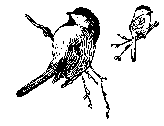
By Gail Frantz
Reisterstown
I have Carolina Wrens coming to a feeder that I fill with sunflower hearts, cracked nuts, peanut butter suet and mealworms. To date, I have seen at least three different Wrens using the feeder.
The other day I saw Wren One in the feeder and Wren Two skulking about outside it. When Wren One flew to an entry hole preparing to leave, Wren Two quickly flew inside the other entry hole and grabbed Wren One by the tail. Wren Two held on for dear life while One pulled with all his might to get free!! Finally One pulled Two out of the hole and they tumbled to the porch in this undignified clutch. Both birds rolled around the corner out of sight. Within seconds, One reentered the feeder. Its tail was frazzled!!!! Its name is now Frazzle Butt and I can tell when this particular one is in the feeder. Wren One remains undaunted and will often allow one of the others to feed inside with it yet at other times chases off all comers.
The next morning I didn't see any Wrens in the feeder for hours. They had been there constantly since it started snowing, so I became concerned. I recalled that I had noticed them entering a piece of PVC pipe lying on the porch. I went out and dug the end out of the snow which was quite deep. Within seconds after I went back in the house, the wrens were at the feeder. I'm not sure if they were really stuck or if they were just sleeping in, but I'm glad to have my entertainment back..
Reisterstown
February 19: Speaking of Turkeys, five hens were feeding under my bird feeder this afternoon. The crust on top of the snow is strong enough to hold their weight.
February 21: Seen from a distance, 3 male & 2 female Turkeys walking easily across deep snow.
Loyola
Cromwell Valley
At one point, I had two Waxwings and two Robins at the top of a tree when the immature Redtail floated up behind them like a ghost bird. One Robin stood his ground while the other three birds took cover. The Redtail simply slipped sideways on the wind and disappeared over the hillside.
*********************************************
Let us hear about your Back Yard and Maryland Birding too!!!
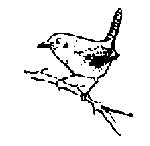
Call or write to:
|
Gail Frantz Tel: 410-833-7135 e-mail: guineabird@aol.com |
To Baltimore Bird Club Home Page